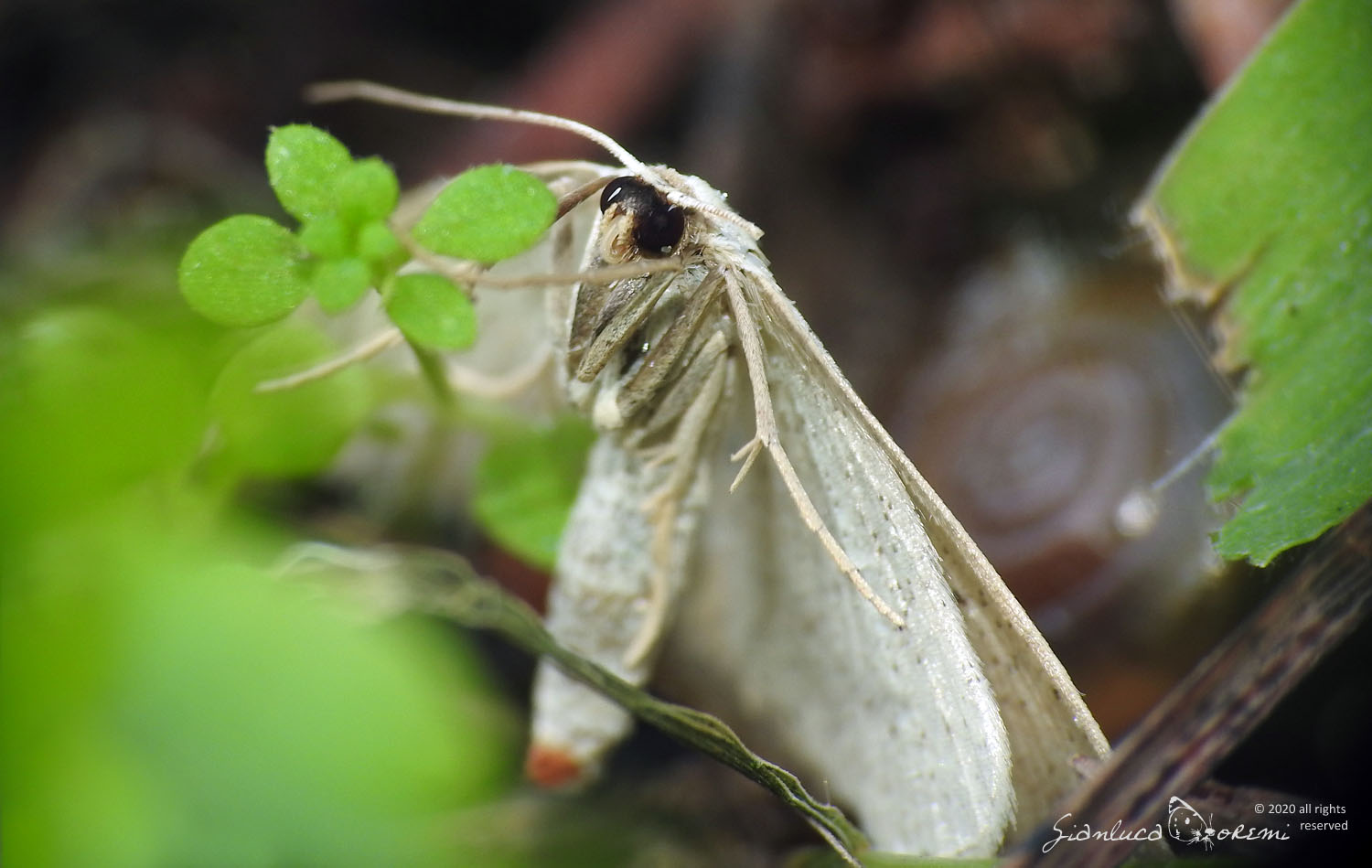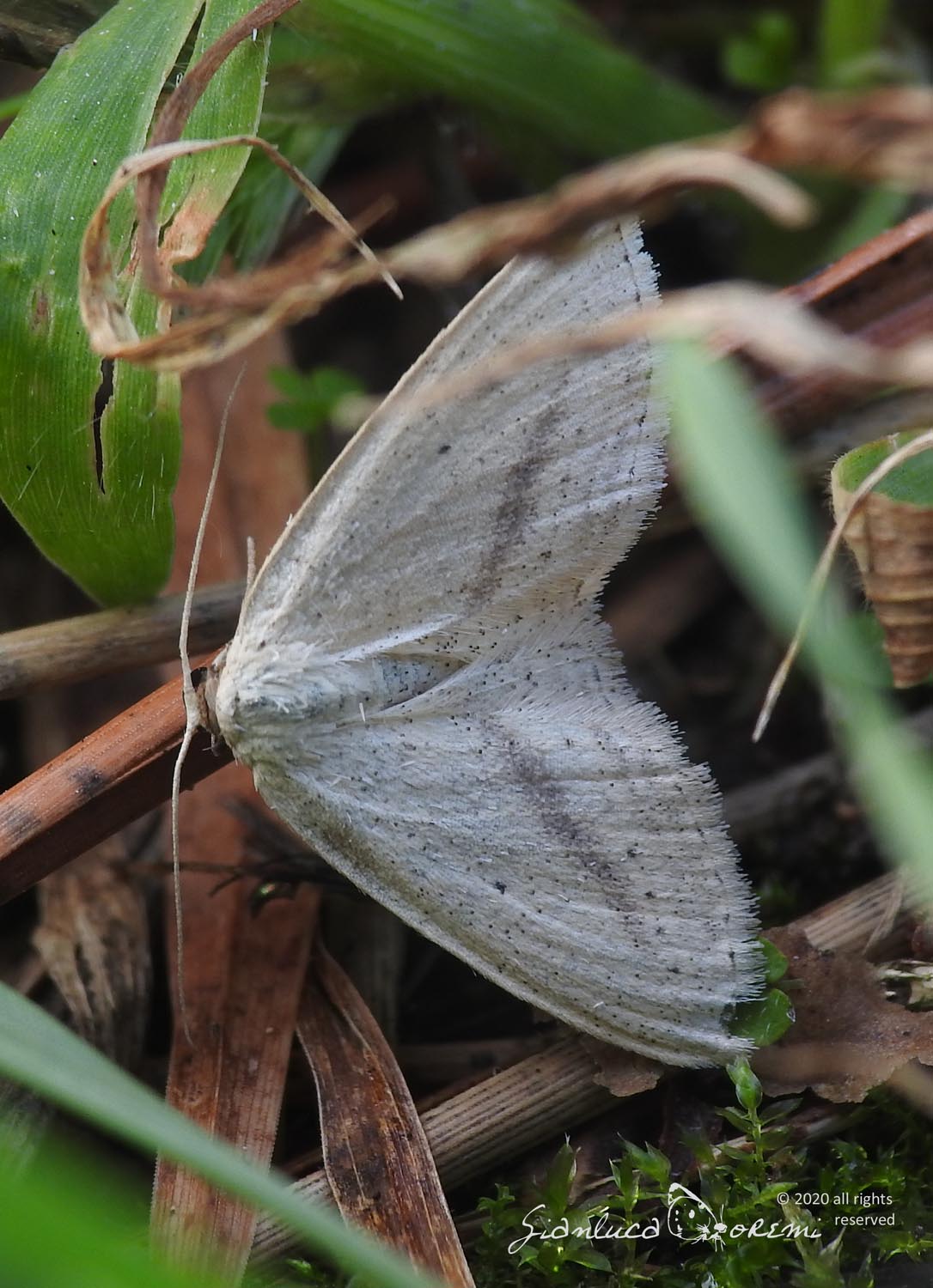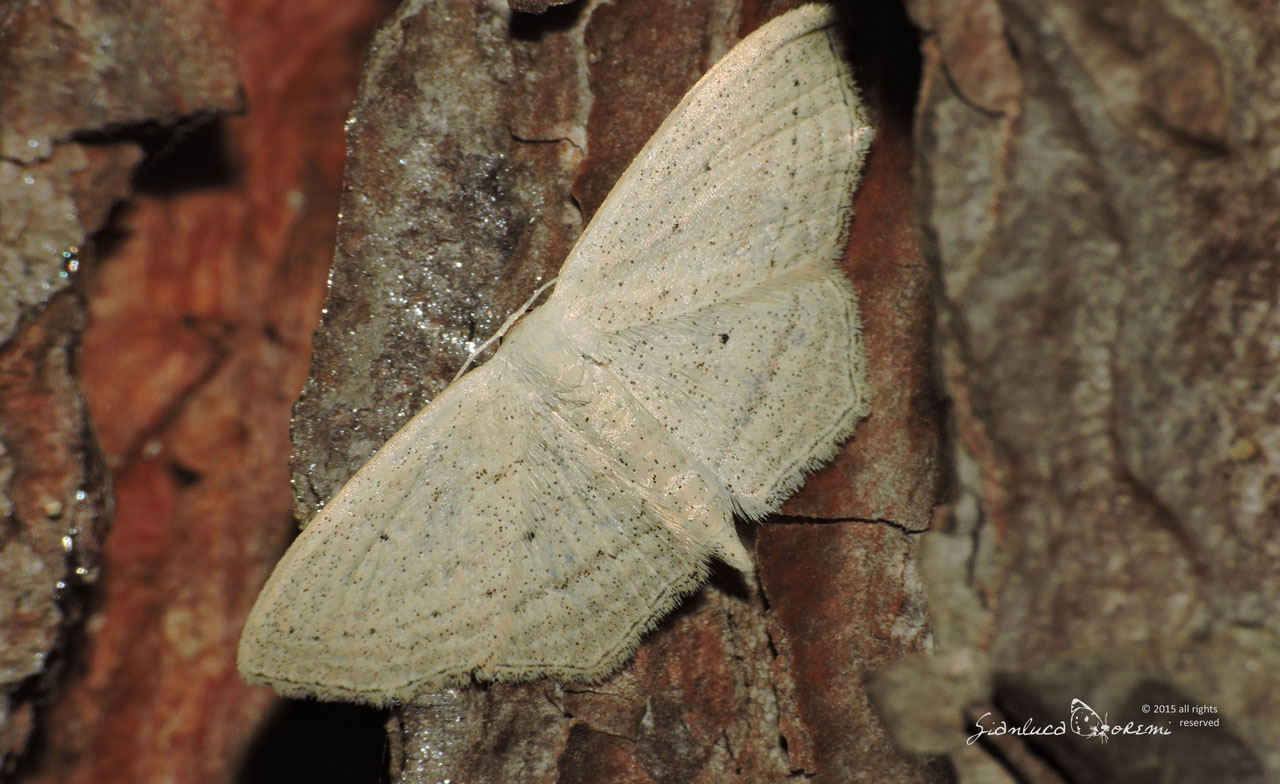Scopula (Calothysanis) emutaria
(Hübner, [1809])
-
 Subfamily: Sterrhinae, Scopulini
Subfamily: Sterrhinae, Scopulini -
 Wingspan: 20-25 mm
Wingspan: 20-25 mm -
 Flight period: Jun - Sep
Flight period: Jun - Sep -
 Spread: Uncommon
Spread: Uncommon -
 Host plants: Chenopodiaceae - Plumbaginaceae
Host plants: Chenopodiaceae - Plumbaginaceae
Information
The Scopula emutaria also called Rosy Wave is a moth of the Geometridae family, subfamily Sterrhinae, with a wingspan of 20-25 mm.
It is distributed in Western and South Western Europe, as well as in Romania, Poland, Belarus and Greece
In Italy it is also present in the islands. *
Its range also extends to North Africa.
It has a whitish or cream background color, with more or less marked shades of pink. The costa is cream colored.
Dusting of gray and black and a central dark point are visible on all four wings.
Clearly visible, but not well defined, a line that starts from the apex of the anterior wing to end in the internal margin in the disc region.
This line is taken up in the discal region of the rear wing, making it appear, when the moth is at rest, a single straight line
continues that runs from one apex to the other of the front wings, making an angle near the abdomen.
From the apex of the front wing starts a series of dark points, also ending in the inner edge of the wing.
The edge of the wings is surrounded by an almost black dark line, more marked in some points almost like a hatch.
The hind wings have a series of dark spots, parallel to the line of the disc region, presenting a well pronounced angle near the third median vein (M3).
The head, thorax and abdomen have the background color of the wings.
Bivoltine moth in southern Europe (univoltine in the north) flies from June to September. It prefers humid and coastal habitats even if it is possible to find it also in other humid environments.
It winters at the larva stage it pupates in a cocoon among the plant debris or on the ground. ***
She is attracted to artificial light. ****
The eggs are ovoid, whitish with many reddish, knurled dots.**
The caterpillar is light brown with a dorsal line and a brown belly. **
The larva feeds on Chenopodiaceae as Beta maritima - Plumbaginaceae as Limonium vulgare.
It has also been reported on Hieracium umbrellatum, Rumex acetosella, Calystegia sepium. beta vulgaris and Armeria. ****
* Lepidoptera mundi https://lepidoptera.eu/ - Fauna Europea https://fauna-eu.org/
** Bestimmungshilfe für die in Europa nachgewiesenen Schmetterlingsarten - http://lepiforum.de/
*** Catalogue of the Lepidoptera of Belgium - https://projects.biodiversity.be/lepidoptera/
**** Roland Robineau, Guide de papillons nocturne de France, Delachaux et Niestlé, 2011 p.44







 EN
EN ITA
ITA
Social and publications